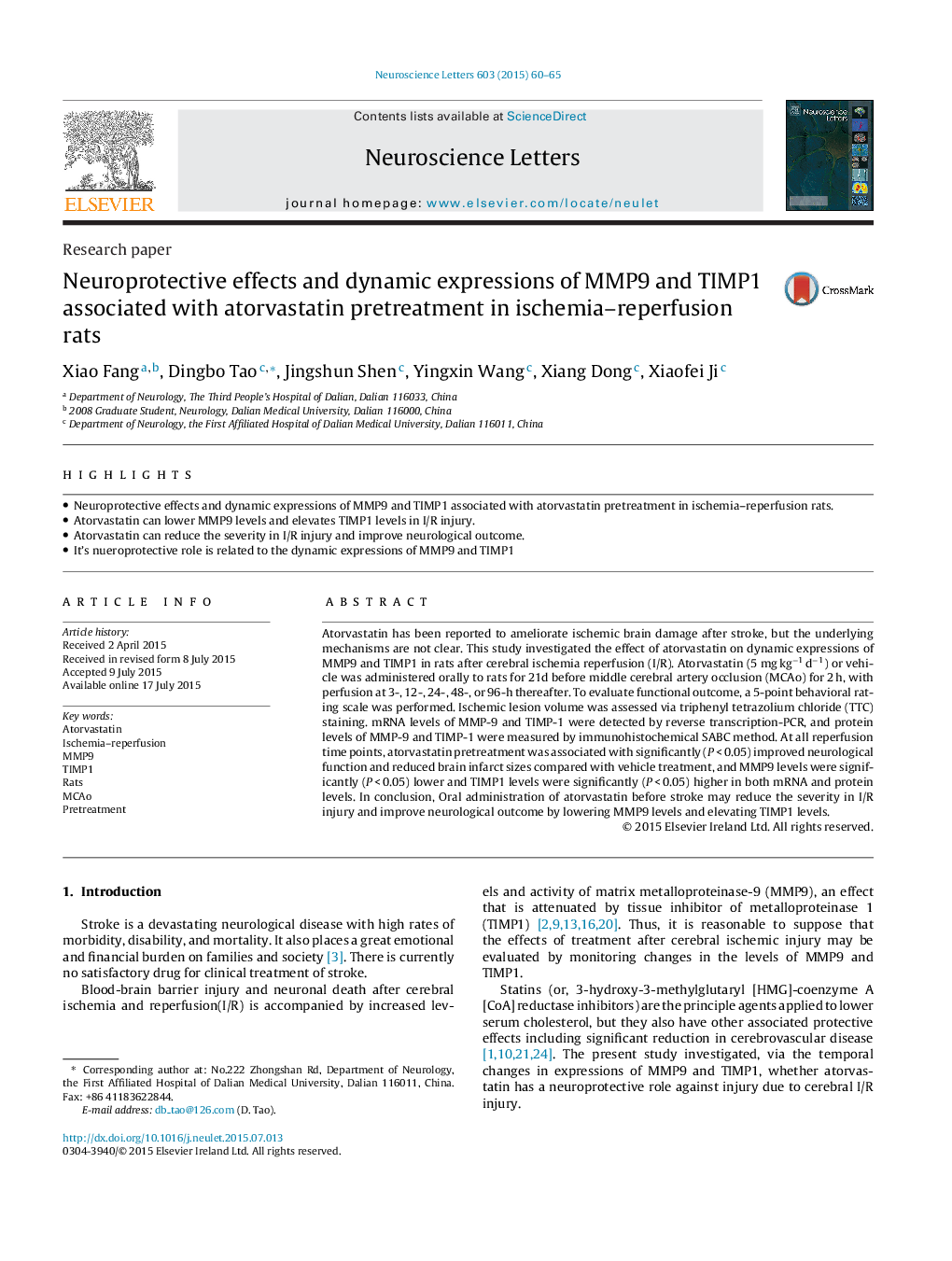| Article ID | Journal | Published Year | Pages | File Type |
|---|---|---|---|---|
| 6280670 | Neuroscience Letters | 2015 | 6 Pages |
Abstract
Atorvastatin has been reported to ameliorate ischemic brain damage after stroke, but the underlying mechanisms are not clear. This study investigated the effect of atorvastatin on dynamic expressions of MMP9 and TIMP1 in rats after cerebral ischemia reperfusion (I/R). Atorvastatin (5 mg kgâ1 dâ1) or vehicle was administered orally to rats for 21d before middle cerebral artery occlusion (MCAo) for 2 h, with perfusion at 3-, 12-, 24-, 48-, or 96-h thereafter. To evaluate functional outcome, a 5-point behavioral rating scale was performed. Ischemic lesion volume was assessed via triphenyl tetrazolium chloride (TTC) staining. mRNA levels of MMP-9 and TIMP-1 were detected by reverse transcription-PCR, and protein levels of MMP-9 and TIMP-1 were measured by immunohistochemical SABC method. At all reperfusion time points, atorvastatin pretreatment was associated with significantly (P < 0.05) improved neurological function and reduced brain infarct sizes compared with vehicle treatment, and MMP9 levels were significantly (P < 0.05) lower and TIMP1 levels were significantly (P < 0.05) higher in both mRNA and protein levels. In conclusion, Oral administration of atorvastatin before stroke may reduce the severity in I/R injury and improve neurological outcome by lowering MMP9 levels and elevating TIMP1 levels.
Related Topics
Life Sciences
Neuroscience
Neuroscience (General)
Authors
Xiao Fang, Dingbo Tao, Jingshun Shen, Yingxin Wang, Xiang Dong, Xiaofei Ji,
